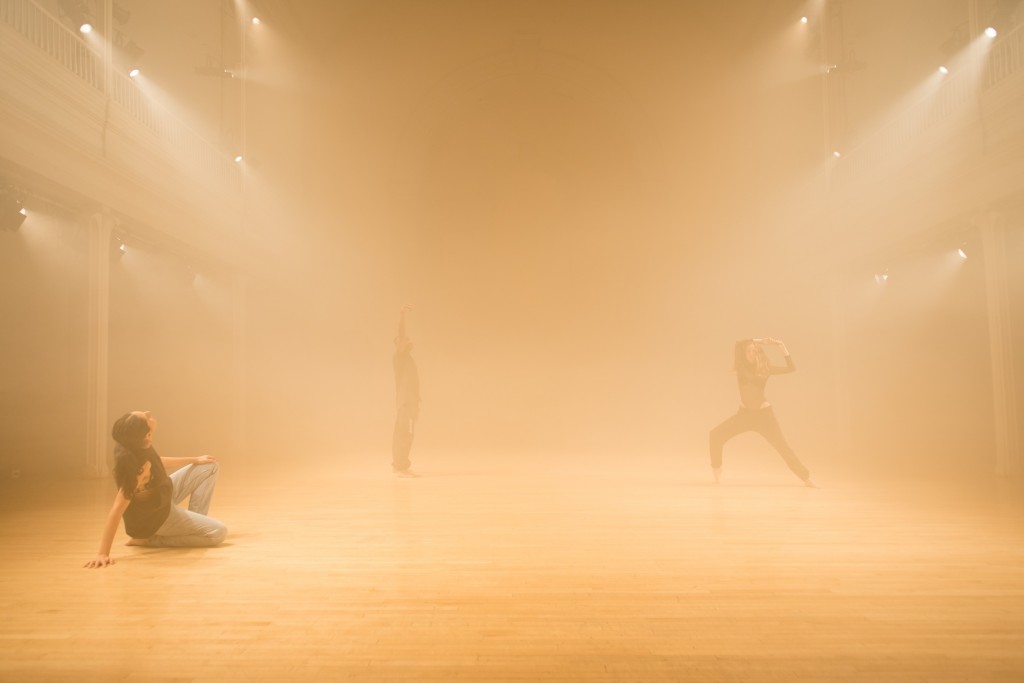Gillian Walsh in Conversation with Lydia Bell
November 15, 2017
If you could make one dance before the world ends, what would it be? I turned this over in my mind as I watched a recent rehearsal for Gillian Walsh’s new work, a Danspace Project commission entitled Moon Fate Sin. The stakes feel high in Walsh’s work. There is a conviction, embedded in both the choreography itself but also in how Gillian engages the various systems that support dance (i.e. language, process, and the space of the institution) that dance must address both formalist and existential concerns. Over the course of the following email exchange, Walsh and I discuss her interest in “dance as suicidal tendency,” what happens when you center dance, and a turn towards mysticism in contemporary culture. Moon Fate Sin, co-presented with Performa, will premiere at Danspace Project November 16-18, 2017.
-Lydia Bell, Danspace Project Program Director
Lydia Bell: What was the starting point for Moon Fate Sin?
Gillian Walsh: This project began as a question about dance as a suicidal tendency. I was thinking about my own relationship to dance, looking at how dance works materially in the contemporary world particularly focusing on alienation and thinking about the psychological aspects of putting dance at the center of your life, which I see in my peers and in older dance artists. Emily Hoffman and I started with thinking about the death drive, reading Freud and related texts. I had this idea at the time that I wanted to make a black metal liturgical dance, and this brought me into ideas of darkness, the void, and the church. I thought about dance as an intersection between prayer and suicidal tendency. Where do the death drive and transcendence drive meet in dance?
LB: I’m interested in what you call the “psychological aspects of putting dance at the center of your life.” I think about this a lot. Often in this field we romanticize, or maybe it’s fetishize, the love and devotion required by artists who do this work. And yet also, that love and devotion is there, so what do we make of it? I often go back to an essay by Pascal Gielen from 2010, “Curating with Love, or a Plea for Inflexibility.” In it he discusses the market forces that have led to the rise of independent curators in the art world, who are nomadic, flexible, project-based… He theorizes that love is essentially inflexible, “at odds” with a project-based model since it resists capitalist modes: “Anyone who worships a work of art has an incalculable length of time or irrationally high sums of money for auction; those who love artists envisage a never-ending relationship at the least, and those who love a society… do not think in terms of interchangeable target groups or realizable and feasible projects, but of lifelong investments and commitment.” It makes me think about the currency of love—is the act of centering dance a love act that will in a sense never be fully acknowledged or reciprocated by an institution or an individual? What is the psychological impact of unreciprocated love?
For your work, I’m curious about your relationship to formalism and how that comes up for you when thinking about what you’re calling a void.
GW: I’m always confused about dance and the problems that come with it—I connect deeply to formalist dance and to perception of time which can often lead me into abstraction and into the immaterial, invisible, nonverbal and consciousness states. I’ve been trying to reckon with my aesthetic preferences in relation to politics and the reality of the contemporary world—how can I hold onto both of these things at once? Can I continue to pursue and desire non-knowing and push past understanding and knowing and language without using this as escapism or as a way of dissociating from the contemporary material world?
Occultist beliefs and premonitions are important in Moon Fate Sin. There’s a major turn toward mysticism in culture activated by global crisis. We’ve been thinking about war and a breakdown of human relationships—crisis activating the collective unconscious.
LB: Yes, this turn toward mysticism—I feel this on a personal level and also in the work I’m seeing. I suppose at its core, mysticism is about surrender: surrendering oneself to a higher power or to the unknown. The pop psychology tendency is our society is to equate surrender with optimism, hope, calm… but what you’re highlighting is the nihilism inherent in the act of surrender.
About your provocation of dance as suicidal tendency: it’s provocative both in the way it negates a romantic view of dance but also in the way it assigns a destructive desire to the choreographic impulse. I feel in myself a resistance to that (hopeless romanticism?) but I also wonder how much of that comes from the fear and shame around death embedded in American culture. Artists are explicit about death in a way that other parts of our society are not. Your framing of suicidal drive feels immediately conceptual to me but I wonder if there is an explicitness you’re interested in, as well.
GW: I could go on for ages about suicidal tendency but I’ll just leave it with I’m thinking about ways of desiring to escape the self. Losing your subject in different ways by different means and the deterioration and breakdown of human social interaction. I see/feel it conceptually, materially, experientially—to me this is directly related to “liturgical” or the entry point into that space.
The performance we’re going to do in November is just one incident in relation to an ongoing process, it’s not a culmination or a presentation. I don’t really know what we’re going to do. It feels good to be deep in a research process, it feels like the beginning of a long-term thing and feels very different from past work.
Gillian Walsh’s Moon Fate Sin premieres Thursday, November 16 – Saturday, November 18. Tickets and More Info.
